Carbon Nanohorns and Their Nanohybrid/Nanocomposites as Sensing Layers for Humidity Sensors-A Review
- PMID: 40871145
- PMCID: PMC12389315
- DOI: 10.3390/polym17162198
Carbon Nanohorns and Their Nanohybrid/Nanocomposites as Sensing Layers for Humidity Sensors-A Review
Abstract
Carbon nanohorns (CNHs), along with their nanocomposites and nanohybrids, have shown significant potential for humidity (RH) monitoring at room temperature (RT) due to their exceptional physicochemical and electronic properties, such as high surface area, tunable porosity, and stability in nanocomposites. Resistive sensors incorporating CNHs have demonstrated superior sensitivity compared to traditional carbon nanomaterials, such as carbon nanotubes and graphene derivatives, particularly in specific RH ranges. This review highlights recent advancements in CNH-based resistive RH sensors, discussing effective synthesis methods (e.g., arc discharge and laser ablation) and functionalization strategies, such as the incorporation of hydrophilic polymers or inorganic fillers like graphene oxide (GO) and metal oxides, which enhance sensitivity and stability. The inclusion of fillers, guided by Pearson's Hard-Soft Acid-Base (HSAB) theory, enables tuning of CNH-based sensing layers for optimal interaction with water molecules. CNH-based nanocomposites exhibit competitive response and recovery times, making them strong candidates for commercial sensor applications. However, challenges remain, such as optimizing materials for operation across the full 0-100% RH range. This review concludes with proposed research directions to further enhance the adoption and utility of CNHs in sensing applications.
Keywords: carbon nanohorns; hydrophilic polymers; monohybrids; nanocomposites; resistive sensors.
Conflict of interest statement
The authors declare no conflicts of interest.
Figures

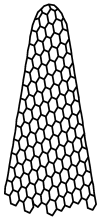

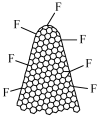




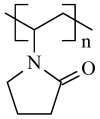





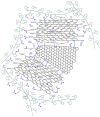







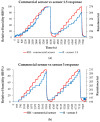





Similar articles
-
Prescription of Controlled Substances: Benefits and Risks.2025 Jul 6. In: StatPearls [Internet]. Treasure Island (FL): StatPearls Publishing; 2025 Jan–. 2025 Jul 6. In: StatPearls [Internet]. Treasure Island (FL): StatPearls Publishing; 2025 Jan–. PMID: 30726003 Free Books & Documents.
-
Management of urinary stones by experts in stone disease (ESD 2025).Arch Ital Urol Androl. 2025 Jun 30;97(2):14085. doi: 10.4081/aiua.2025.14085. Epub 2025 Jun 30. Arch Ital Urol Androl. 2025. PMID: 40583613 Review.
-
Sustainable synthesis and multifunctional applications of biowaste-derived carbon nanomaterials and metal oxide composites: A review.Chemosphere. 2025 Sep;385:144540. doi: 10.1016/j.chemosphere.2025.144540. Epub 2025 Jul 3. Chemosphere. 2025. PMID: 40609513 Review.
-
Non-Ti MXenes: new biocompatible and biodegradable candidates for biomedical applications.J Mater Chem B. 2025 Jan 22;13(4):1212-1228. doi: 10.1039/d4tb01904k. J Mater Chem B. 2025. PMID: 39688533 Review.
-
Covalent and Strong Metal-Support Interactions for Robust Single-Atom Catalysts.Acc Chem Res. 2025 Aug 5;58(15):2440-2453. doi: 10.1021/acs.accounts.5c00305. Epub 2025 Jul 15. Acc Chem Res. 2025. PMID: 40664623
References
-
- Kuzubasoglu B.A. Recent studies on the humidity sensor: A mini review. ACS Appl. Electron. Mater. 2022;4:4797–4807. doi: 10.1021/acsaelm.2c00721. - DOI
Publication types
LinkOut - more resources
Full Text Sources

